Exploring Altay Rock Paintings: A Glimpse into the Lives of Our Ancestors
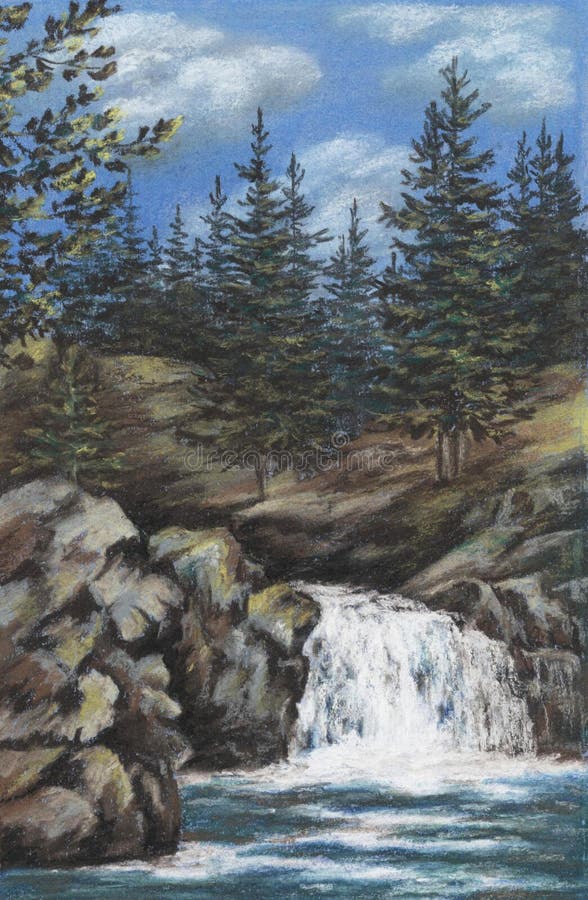
An Essential Guide to Visiting Altay Rock Paintings
Nestled within the breathtaking landscapes of the Mongolian Altai, the Altay Rock Paintings stand as a mesmerizing testament to humanity’s enduring relationship with nature and culture. This UNESCO World Heritage site, a canvas etched against the rugged mountains, chronicles the evolution of human life over an astonishing 12,000 years. From ancient hunters tracking mammoths in lush, forested valleys to the horse-dependent nomads of the Scythian and Turkic eras, these petroglyphs reveal the rich tapestry of life that once flourished in this remote region.
Each carving tells a story, a visual narrative that transports visitors back to a time when the Altai mountains were not just a backdrop, but a vital part of existence. As you wander through the high mountain valleys, you’ll encounter intricate depictions of majestic elk, powerful aurochs, and the iconic horse, each a symbol of the changing cultures that have called this place home. The artistry and historical significance of these rock paintings beckon travelers from around the globe, inviting them to explore the depths of Mongolia’s prehistoric heritage.
Whether you’re a history enthusiast, an art lover, or simply seeking the awe-inspiring beauty of Mongolia’s landscapes, visiting the Altay Rock Paintings promises an unforgettable experience. Prepare to be captivated not only by the stunning visuals carved into stone but also by the profound stories they unveil, waiting to be discovered by those willing to venture into this remarkable site.
In This Guide
- An Essential Guide to Visiting Altay Rock Paintings
- The Rich History and Legends of Altay Rock Paintings
- Main Highlights: What You Absolutely Can’t Miss
- Planning Your Visit: A Practical Guide
- Tickets: Prices, Booking, and Tips
- How to Get There: A Complete Transportation Guide
- Local Cuisine and Accommodation Nearby
- Frequently Asked Questions
- Final Thoughts on Your Trip
The Rich History and Legends of Altay Rock Paintings
Nestled in the breathtaking landscapes of Mongolia, the Altay Rock Paintings are an extraordinary testament to a rich cultural heritage that spans over 12,000 years. These petroglyphs, etched into stone by ancient hands, tell the story of human evolution from hunter-gatherers to horse-dependent nomadic societies. The rock art is not just a visual delight; it offers a profound insight into the lives, beliefs, and environments of prehistoric communities in the region.
The earliest carvings date back to approximately 11,000 to 6,000 BC, a time when the Altai mountains were partially forested and provided a haven for large game hunters. The imagery from this period showcases magnificent creatures such as mammoths, elk, and aurochs, rendered in striking profiles that capture their majestic forms. As the climate transformed and the landscape evolved into a drier steppe, the artwork began to reflect the changing lifestyles of its creators.
By 6,000 to 4,000 years ago, the transition toward herding as a dominant way of life is depicted in the rock paintings. This shift marks a pivotal moment in the history of the Altay people, as they adapted to their environment and began to domesticate animals. The art from this era illustrates not only the animals they herded but also the intricate relationships formed between humans and their livestock.
As we venture into the early first millennium BC, the imagery further evolves, revealing the profound influence of horses on nomadic lifestyles during the Scythian and later Turkic periods. These carvings illustrate the importance of horses in transport, warfare, and agriculture, underscoring their status as a cornerstone of nomadic culture. The artistic depictions from this time are dynamic, often showing scenes of hunting, rituals, and daily life, providing a vivid narrative of a society deeply connected to its environment.
The Altay Rock Paintings also serve as a canvas for legends and myths that have been passed down through generations. They are not merely representations of the physical world but encapsulations of the spiritual beliefs of the Altay people. Many of these carvings are thought to have ritualistic significance, possibly serving as offerings to deities or as markers of sacred sites. This intertwining of art and spirituality adds another layer of depth to the already rich tapestry of history represented in the rock paintings.
Today, these ancient artworks are recognized as one of the most complete and well-preserved records of human prehistory in Central and North Asia. Declared a UNESCO World Heritage Site, the Altay Rock Paintings continue to inspire awe and wonder. They provide travelers with a unique opportunity to step back in time and connect with the stories of the people who once roamed these majestic mountains, their lives intricately woven into the fabric of the land itself.
Visiting the Altay Rock Paintings is more than just an exploration of ancient art; it is a journey into the heart of human history, where every carving on the rock tells a story of survival, adaptation, and the enduring spirit of the Altay culture. As you stand before these ancient works, you can’t help but feel a connection to the past, a whisper of the legends that have shaped this remarkable region for millennia.
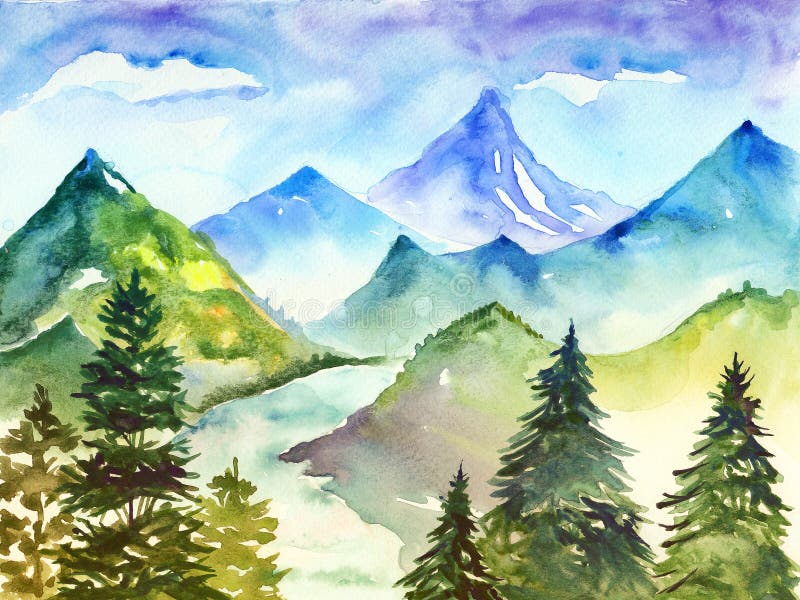
Altay Rock Paintings.
Main Highlights: What You Absolutely Can’t Miss
Exploring the Altay Rock Paintings is a journey through time, where ancient artistry meets breathtaking landscapes. This UNESCO World Heritage site offers a treasure trove of cultural and historical significance, perfect for the adventurous traveler eager to connect with Mongolia’s rich heritage. Here are the must-see highlights that you absolutely cannot miss:
1. Tsagaan Salaa-Baga Oigor
Nestled in the heart of the Altai Mountains, this site is one of the largest and most significant petroglyph locations. Here, you can marvel at thousands of rock carvings that date back over 12,000 years. The imagery showcases a range of subjects, from majestic aurochs to graceful ibex, illustrating the evolution of life in this once forested region. Don’t forget your camera—these stunning rock formations provide a dramatic backdrop for your photographs!
2. Upper Tsagaan Gol (Shiveet Khairkhan)
This site is a highlight for any visitor, featuring intricate carvings that depict the transition from hunting to herding culture. The petroglyphs here reflect the lifestyle changes of the people who inhabited this region, with depictions of domesticated animals and horse-riding nomads. The surrounding glacial valleys create an awe-inspiring setting for these ancient artworks, making it a perfect spot for reflection and exploration.
3. Aral Tolgoi
Home to some of the most well-preserved carvings, Aral Tolgoi is an essential stop for understanding the breadth of prehistoric life in the Altai. The petroglyphs here are notable for their detail and variety, showcasing animals like mammoths and rhinoceroses, as well as scenes of daily life. As you wander this archaeological wonder, you’ll feel a profound connection to the early human communities that once thrived here.
4. The Landscape
The Altai Mountains themselves are a breathtaking feature of this experience. The rugged terrain, glacial lakes, and expansive steppes provide a stunning backdrop to the rock paintings. Whether you’re hiking through the valleys or simply enjoying a picnic with a view, the natural beauty of this region enhances the allure of the petroglyphs.
5. Cultural Context
As you explore the sites, take a moment to consider the stories behind the carvings. Each petroglyph serves as a historical document, reflecting the beliefs, practices, and environment of the people who lived here over millennia. Engaging a local guide can enrich your understanding of these cultural nuances, providing insights into the significance of the artworks and the lifestyle changes they represent.
6. Wildlife Spotting
The area surrounding the petroglyphs is rich in biodiversity, making it an excellent location for wildlife enthusiasts. Keep your eyes peeled for native species such as snow leopards, ibex, and various bird species. The unique ecosystem of the Altai Mountains adds another layer of excitement to your visit.
7. Cultural Preservation Efforts
Learn about the ongoing efforts to preserve these ancient sites, which are protected under Mongolian law. Understanding the challenges of conservation in such remote areas can deepen your appreciation for the historical significance of the rock paintings and the importance of protecting these cultural treasures for future generations.
8. Photography Opportunities
The interplay of light and shadow across the rock formations creates exceptional photography opportunities, especially during sunrise and sunset. Capture the stunning vistas and the intricate details of the petroglyphs for memories that will last a lifetime.
9. Local Communities
Engage with the local herders and communities who hold a wealth of knowledge about the Altai region’s history and culture. Their stories and traditions offer a unique perspective on the significance of the rock paintings and the surrounding landscape.
Conclusion
Visiting the Altay Rock Paintings is more than just a sightseeing trip; it’s an immersive experience that connects you with the profound history of human civilization in Mongolia. From the breathtaking landscapes to the intricate petroglyphs, every moment spent here is a step back in time, promising adventure and discovery at every turn.

Altay Rock Paintings.
Planning Your Visit: A Practical Guide
Planning Your Visit: A Practical Guide to the Altay Rock Paintings
Exploring the Altay Rock Paintings, a UNESCO World Heritage site, offers an extraordinary glimpse into the prehistoric cultures that once thrived in this stunning region of Mongolia. This guide will help you navigate the practicalities of your visit, ensuring you make the most of this captivating experience.
Getting There
Air Travel: The nearest major airport is in Ulaanbaatar, the capital of Mongolia. From there, you can take a domestic flight to Bayan-Ulgii, the aimag (province) where the rock paintings are located. Flights are limited, so booking in advance is advisable.
Overland Travel: If you prefer a road trip, consider renting a vehicle or joining a guided tour. The journey from Ulaanbaatar to Bayan-Ulgii can take several days, but it offers breathtaking views of Mongolia’s diverse landscapes. Be prepared for long drives on unpaved roads, and ensure your vehicle is suitable for rugged terrain.
Best Time to Visit
The ideal time to visit the Altay Rock Paintings is during the summer months, from June to September. During this period, weather conditions are relatively mild, allowing for enjoyable hiking and exploration. However, be mindful that temperatures can fluctuate, and rain is possible, so pack accordingly.
What to Bring
- Comfortable Footwear: The sites often require walking on uneven terrain, so sturdy hiking boots are essential.
- Clothing Layers: Dress in layers to accommodate fluctuating temperatures, especially during the evenings.
- Sun Protection: Sunscreen, sunglasses, and a wide-brimmed hat will protect you from the strong sun.
- Water and Snacks: Bring sufficient water and snacks, as facilities may be limited in remote areas.
- Camera and Binoculars: Capture the stunning landscapes and intricate petroglyphs. Binoculars will enhance your viewing experience of distant wildlife.
Guided Tours
While it is possible to explore the Altay Rock Paintings independently, hiring a local guide is highly recommended. Knowledgeable guides can provide valuable insights into the history and significance of the rock art, enhancing your visit. They can also assist with logistics and ensure you navigate the region safely.
Respecting the Site
The Altay Rock Paintings are invaluable cultural treasures. To preserve their integrity, adhere to the following guidelines:
- Stay on Designated Paths: Walking off established trails can damage sensitive areas.
- Do Not Touch the Petroglyphs: Oils and dirt from hands can erode the carvings over time.
- Leave No Trace: Carry out all trash and respect the natural environment.
Accommodations
Accommodation options in Bayan-Ulgii range from hotels to guesthouses and yurt stays. It’s advisable to book your accommodation in advance, particularly during peak travel seasons, to secure your preferred lodging.
Nearby Attractions
Take advantage of your visit by exploring additional attractions in the region:
- Altai Tavan Bogd National Park: Home to stunning landscapes, glaciers, and diverse wildlife, this park is a must-visit for nature lovers.
- Local Culture: Engage with the local Kazakh community to experience their rich traditions, including eagle hunting demonstrations and traditional music.
Cultural Etiquette
When interacting with local communities, be respectful of their customs and traditions. It’s polite to ask permission before taking photographs of people or their property. Learning a few basic phrases in Mongolian or Kazakh can also go a long way in connecting with the locals.
Conclusion
A visit to the Altay Rock Paintings is not just about witnessing ancient art; it’s an adventure into the heart of Mongolia’s cultural and historical tapestry. With careful planning and respect for the site, your journey will be one filled with wonder and discovery. Enjoy your exploration of this unique and breathtaking region!
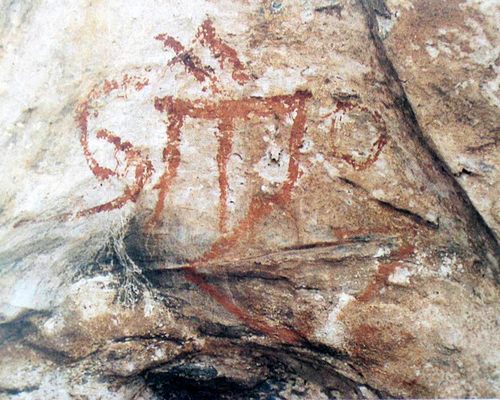
Altay Rock Paintings.
Tickets: Prices, Booking, and Tips
Visiting the Altay Rock Paintings, a UNESCO World Heritage site, is a remarkable journey into the heart of Mongolia’s rich cultural and historical tapestry. Here’s everything you need to know about tickets, booking, and tips for your visit.
Ticket Information
- Entry Fees:
-
Tickets to the Altay Rock Paintings sites are generally very affordable, with prices ranging from $2 to $5 USD per person. This nominal fee helps support the conservation of the sites.
-
Children and Student Discounts:
-
Reduced rates are often available for children and students, making it a great educational outing for families and school groups.
-
Guided Tours:
- Many visitors opt for guided tours, which typically include entry fees in the overall package. Prices for guided tours vary based on the length and inclusions, starting around $30 USD for a half-day tour.
Booking Your Visit
- Advance Reservations:
-
While walk-in visitors are usually welcome, it’s advisable to book your tour or guide in advance, especially during the peak tourist season (June to September). This ensures you have a knowledgeable guide who can enhance your experience with insights into the rock art’s significance.
-
Online Options:
-
Several travel agencies offer online booking options for tours that include the Altay Rock Paintings. Websites like Viator or local Mongolian tour operators provide a variety of packages tailored to different interests and timeframes.
-
Local Guides:
- Upon arrival in Bayan-Ulgii aimag, you can find local guides who are passionate about the history and culture of the region. Hiring a local guide not only enriches your experience but also supports the local economy.
Tips for Your Visit
-
Respect the Sites: Always adhere to the guidelines provided by your guide or signage at the sites. The rock carvings are delicate and irreplaceable, so avoid touching or defacing them in any way.
-
Dress Appropriately: The sites are located in high-altitude mountainous regions. Wear sturdy hiking shoes and dress in layers, as temperatures can vary significantly throughout the day.
-
Bring Essentials: Don’t forget to carry water, snacks, sunscreen, and a camera. The landscape is stunning, and you’ll want to capture the breathtaking views of the Altai Mountains as well as the rock paintings.
-
Plan for Weather: Check weather conditions ahead of your visit. Be prepared for sudden changes, as mountain weather can be unpredictable.
-
Cultural Sensitivity: Engage respectfully with local customs and traditions. If you have the chance, learning a few words in Mongolian can enhance your interactions with local guides and residents.
By keeping these tips and information in mind, you’ll be set for an inspiring visit to the Altay Rock Paintings, where history comes alive through ancient artistry. Enjoy your journey into the past!
How to Get There: A Complete Transportation Guide
Visiting the Altay Rock Paintings in Mongolia is an adventure that requires careful planning, particularly when it comes to transportation. This guide will help you navigate your way to these incredible petroglyphs, which offer a fascinating glimpse into the region’s prehistoric culture.
Getting to Mongolia
- International Flights
- Ulaanbaatar: Most international travelers will first fly into Chinggis Khaan International Airport (ULN) in Ulaanbaatar, the capital of Mongolia. Major airlines connect Ulaanbaatar with cities like Beijing, Moscow, Seoul, and Tokyo.
- Visa Requirements: Ensure you check the visa requirements for your nationality before traveling.
From Ulaanbaatar to Bayan-Ulgii Aimag
- Domestic Flights
- Direct Flights: The quickest way to reach Bayan-Ulgii is by taking a domestic flight from Ulaanbaatar to Bayan-Ulgii Airport (ULG), which takes approximately 2-3 hours. Flights are operated several times a week, so book in advance to secure your seat.
-
Airlines: Look for flights operated by local carriers such as MIAT Mongolian Airlines or Aero Mongolia.
-
Overland Travel
- Bus: If you prefer a more adventurous route, consider taking a long-distance bus from Ulaanbaatar to Ulgii, the capital of Bayan-Ulgii Aimag. The journey can take between 30-36 hours, depending on road conditions. Buses depart from the “Dragon Bus Station” in Ulaanbaatar.
- Private Vehicle: For those wanting to experience the stunning landscapes of Mongolia, renting a 4×4 vehicle is a popular option. The drive from Ulaanbaatar to Ulgii offers breathtaking views but requires a basic understanding of off-road driving.
Exploring the Altay Rock Paintings
- Getting to the Sites
- Local Transportation: Once you arrive in Ulgii, the best way to reach the Altay Rock Paintings is by hiring a local guide or driver. The petroglyph sites, such as Tsagaan Salaa-Baga Oigor and Upper Tsagaan Gol, are located in remote areas and often require a 4WD vehicle.
-
Guided Tours: Many local tour companies offer guided trips to the petroglyphs, including transportation, which can enhance your experience with knowledgeable insights into the history and significance of the sites.
-
Travel Tips
- Timing: The best time to visit the Altay Rock Paintings is during the summer months (June to September) when weather conditions are more favorable for travel.
- Accommodation: Consider staying in local ger camps (traditional Mongolian yurts) near Ulgii for an authentic experience. These camps often provide meals and can assist with arranging transport to the petroglyph sites.
Final Thoughts
Visiting the Altay Rock Paintings is not just a journey to see ancient art; it’s a deep dive into the rich history of Mongolia. With careful planning and a sense of adventure, you’ll find that the trip to these remarkable petroglyphs is as enriching as the art itself. Safe travels!
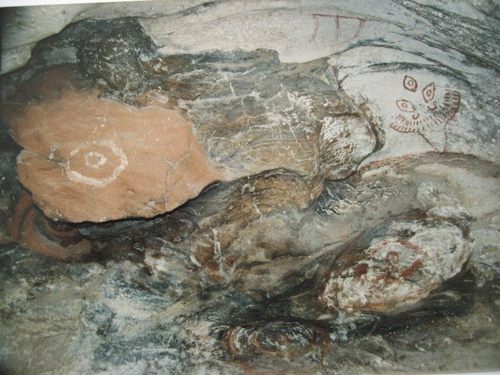
Altay Rock Paintings.
Local Cuisine and Accommodation Nearby
Exploring the Altay Rock Paintings is not just about witnessing the ancient petroglyphs; it also presents an opportunity to experience the rich local culture through its cuisine and hospitality. Here are some recommendations for food and accommodation nearby, ensuring your visit is both enjoyable and memorable.
Local Cuisine
1. Traditional Mongolian Barbecue (Khuushuur):
Indulge in khuushuur, a deep-fried meat pastry that is a staple in Mongolian cuisine. You can find these delicious pockets of meat at local markets or eateries in Bayan-Ulgii aimag, where they are often served with a side of tangy pickles or fresh vegetables.
2. Beshbarmak:
This hearty dish, meaning “five fingers,” is a must-try. Made from boiled meat (usually lamb or horse) and served over wide noodles, it is a traditional dish of the region. Many local restaurants serve beshbarmak, often accompanied by a rich broth.
3. Milk Tea (Suutei Tsai):
No meal is complete without a cup of Mongolian milk tea. This savory drink, made with tea, milk, and salt, is a perfect refreshment after a day of exploring. You can enjoy it at family-owned cafés or tea houses.
4. Mutton Skewers (Shashlik):
Experience the joy of grilled mutton skewers, often seasoned with local herbs and spices. Street vendors and small grills dotting the area offer this delightful treat, perfect for a quick bite as you explore.
Accommodation Nearby
1. Altai Tavan Bogd National Park Guesthouses:
For a unique experience, consider staying in one of the guesthouses within Altai Tavan Bogd National Park. These lodges offer basic amenities and a chance to connect with nature. Many guesthouses include meals showcasing local cuisine, allowing you to savor authentic flavors while enjoying stunning views of the mountains.
2. Local Yurt Stays:
Immerse yourself in the nomadic lifestyle by staying in a traditional Mongolian yurt. Many herders offer yurt accommodations, complete with a warm stove and cozy bedding. This experience often includes home-cooked meals and the opportunity to learn about local customs and traditions.
3. Guesthouses in Bayan-Ulgii:
The town of Bayan-Ulgii has several guesthouses catering to travelers. These accommodations provide comfortable rooms, Wi-Fi, and meals that feature local dishes. Popular options include Bayan-Ölgii Guesthouse and Altai Hotel, where you can enjoy a warm welcome from the local hosts.
4. Eco-Lodges:
For those preferring a more sustainable approach, eco-lodges near the rock paintings offer environmentally friendly accommodations. These lodges prioritize local culture and cuisine, providing visitors with an authentic and responsible travel experience.
Conclusion
Your visit to the Altay Rock Paintings will be enriched by the delectable local cuisine and welcoming accommodations available in the area. Whether you opt for traditional dishes, stay in a yurt, or unwind in a cozy guesthouse, you’ll find that the hospitality and flavors of Mongolian culture will leave a lasting impression. Make sure to take the time to savor each moment, both in the shadow of ancient art and the warmth of local traditions.
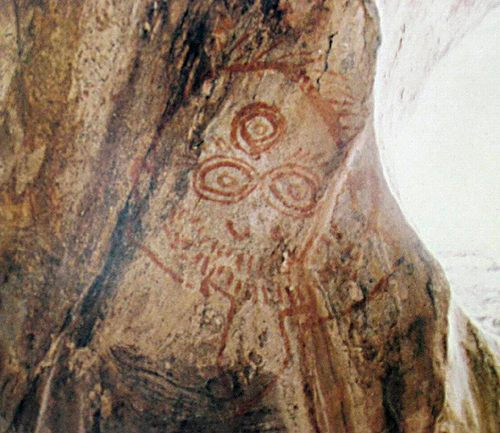
Altay Rock Paintings.
Frequently Asked Questions
Frequently Asked Questions about the Altay Rock Paintings
-
Where are the Altay Rock Paintings located?
The Altay Rock Paintings are situated in the Mongolian Altai region, specifically within three sites in Bayan-Ulgii aimag: Tsagaan Salaa-Baga Oigor, Upper Tsagaan Gol (Shiveet Khairkhan), and Aral Tolgoi. These sites are nestled in high mountain valleys that were shaped by Pleistocene glaciers, providing a stunning backdrop for these remarkable historical treasures. -
What is the historical significance of the rock paintings?
The Altay Rock Paintings date back over 12,000 years and provide a rich visual record of the cultural evolution in Mongolia. They illustrate the transition from hunting large game, in a time when the area was forested, to herding and eventually to a horse-dependent nomadic lifestyle. This progression offers invaluable insights into the lives of prehistoric communities in northern Asia. -
How can I access the Altay Rock Paintings?
Accessing the rock paintings typically involves traveling to Bayan-Ulgii aimag. The best way to reach the sites is through guided tours that include transportation, as the locations are somewhat remote and may require navigating rugged terrain. Local tour operators can provide detailed itineraries and knowledgeable guides. -
What should I wear and bring for a visit?
Given the mountainous terrain and variable weather conditions, it is advisable to wear sturdy hiking boots, layered clothing for temperature changes, and a waterproof jacket. Additionally, bring a camera to capture the stunning rock art and surrounding landscapes, as well as water, snacks, and sunscreen for comfort during your visit. -
Are there any facilities available at the rock painting sites?
Facilities at the rock painting sites are limited, as they are primarily outdoor cultural heritage sites. Travelers should prepare for a lack of amenities such as restrooms or food vendors. It’s advisable to pack a picnic and ensure you have all necessary supplies for your day trip. -
Is it safe to visit the Altay Rock Paintings?
While the sites themselves are generally safe to visit, travelers should exercise caution due to the rugged terrain and potential weather changes. It’s recommended to stay on marked paths and to travel with a guide, especially if you are unfamiliar with the area. -
Can I take photos of the rock paintings?
Yes, photography is allowed at the Altay Rock Paintings, but visitors are encouraged to be respectful of the ancient art. Avoid using flash or touching the paintings to help preserve their integrity for future generations. -
What is the best time of year to visit the Altay Rock Paintings?
The ideal time to visit is during the late spring to early autumn months (May to September) when the weather is milder and conducive to outdoor exploration. However, travelers should be prepared for sudden changes in weather, especially in mountainous regions.
Final Thoughts on Your Trip
As you reflect on your journey to the Altay Rock Paintings, consider the profound connection between the ancient cultures that once thrived in these rugged landscapes and the present-day world. Each petroglyph tells a story—a rich tapestry woven with the threads of time, culture, and the human experience spanning over 12,000 years. These magnificent carvings not only unveil the lives of ancient hunters and nomadic herders but also invite you to ponder the shared heritage that binds us all.
Walking among the rocks, you are not merely an observer but a participant in a timeless dialogue between past and present. The artistry captured in stone serves as a reminder of the resilience of human spirit and creativity, echoing through the ages. As you leave this remarkable site, carry with you the stories of these ancient peoples and the breathtaking beauty of the Altai Mountains.
May your heart be full, your mind inspired, and your spirit enriched by this unique glimpse into our shared history. Whether you are an adventurer, a history buff, or simply a lover of nature, the Altay Rock Paintings offer an unforgettable experience that will resonate long after your visit. Safe travels as you embark on your next adventure!